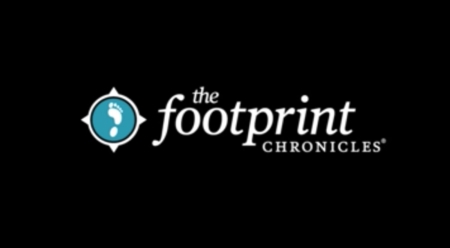Patagonia Employees’ My Footprint Series: Ode to a Dead Volvo
A new citizen is emerging. That citizen is engaged, concerned, and most of all, confident; confident in his or her choice as a consumer, confident in his or her power as an employee, confident that change is possible.
The Footprint Chronicles were developed to document the changes we’re making as a company to lighten our environmental impact and do less harm. These chronicles are as much an inspiration to Patagonia employees as they are an outgrowth of our personal values. The “My Footprint” series shares the stories of Patagonia employees who have been inspired by the Chronicles, and whose inspiring lives help fuel the vision of what we can do as a company.
Their stories are offered here, glimpses of individual footprints spotted along the path toward positive change. We invite you to enjoy these personal accounts, and share your own in the Comments included with these posts.
__________________________________________________________
He was a 1989 Volvo station wagon, silver gray, turbo. We bought him used, one owner, in 1995, for $12,000 and we were lucky. We had another Volvo at home, a snappy red 850 (1993) who had a kind of Viking joie de vivre, if Scandinavians can be said to have joy in life. We named her Freya. When we brought the station wagon home it was clear he was more patient, less a Viking than a modern Swede, a socialist perhaps, and so we named him Oskar.
Oskar was my car. The first time he and I went on a longish trip, it was from Santa Barbara to Los Angeles with a friend in heavy rain. We hit rush hour traffic on the Pasadena Freeway, an elderly roadway of narrow lanes and bad curves, and Oskar drove like a draft horse, pushing his chest through the squalls and the waves from trucks, mowing his way past drowned sports cars.
He was comfortable. His leather seats were high, and reclined, like Eames chairs. When I drove him north to San Francisco the first time with another friend, she said, “It’s like driving in a living room.”
Nothing ever went wrong with Oskar. A few small things had to be replaced: hoses, brake linings, a wiper. Regularly, our mechanic, Steve, who had an old dog that used to lie outside his garage on a large cushion, would pat Oskar’s hood and pronounce him “good.” I took him in for his 3,000-mile checks and thought he would last forever.
I killed him. In my busy life, I ignored the smell of oil for two days. I had a list of things I had to do the day of Oskar’s death and among them was not dropping him off at Steve’s. And so on the freeway, I heard a fluttering sound, as if a flag were inside Oskar’s hood, and looked out the rear view window to see black smoke blooming from his tail pipe. I pulled over, at the foot of an exit, but not soon enough.
After the AAA tow, Steve met with me over the body. “That engine got hot,” he said, and looked at me as if I had shot his dog. I felt I had, practically, done exactly that. This car, so patient, so reliable, so destined to last for over 200,000 miles had died an early death at 158,619 because of my neglect.
And then? What to do? I mean, the decision to buy another car is freighted. It’s not only new vs. used, and cute vs. practical, and what we can honestly afford vs. a lark, it’s gas mileage, gas mileage, gas mileage. And emissions, emissions, emissions. And maybe we should just rebuild the engine. It was cheaper than a new car and in some ways, made green sense: recycling is a virtue.
We test drove a Prius. I know there are those who love them: a friend wanted to sleep in hers the night she brought it home. But, I wasn’t sure. The TV screen, the technology –- isn’t there something a little preachy about them? And, of course, the Toyota dealer wanted what was essentially a ransom for this one — silver, with gray leather interior — which was, unbelievably, available. People were waiting five months for a Prius and plunking down thousand dollar deposits, non-refundable. But it was soooo expensive. We decided no, we’d rebuild Oskar.
Then a friend called. My husband mentioned our decision. Our friend, an environmental consultant said, “You can’t do that.”
“Pardon?”
“You actually can’t do that. The emissions on a car that old are terrible. You gotta either buy the Prius or something made within the last three years.”
Damn. The rubber hit the road.
We bought her.
We love her.
We named her Lady Murasaki.
– Nora Gallagher, Environmental Editor
Ed note: An earlier version of this piece was published this year in the L.A. Times’ Opinion section.

